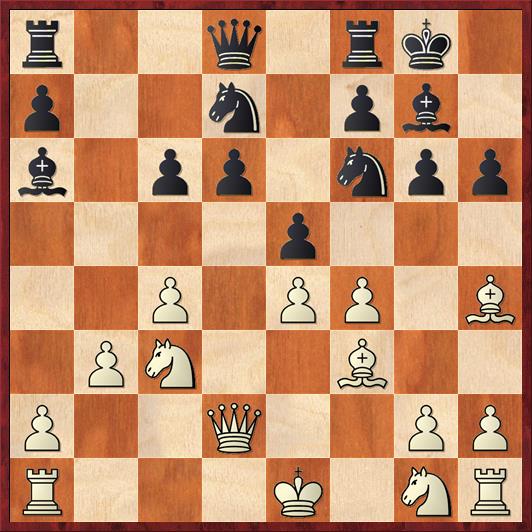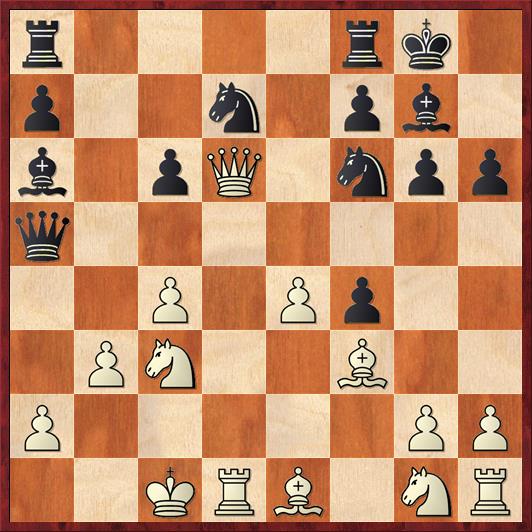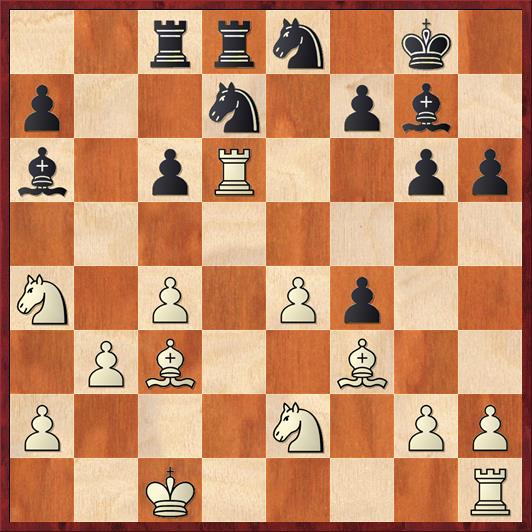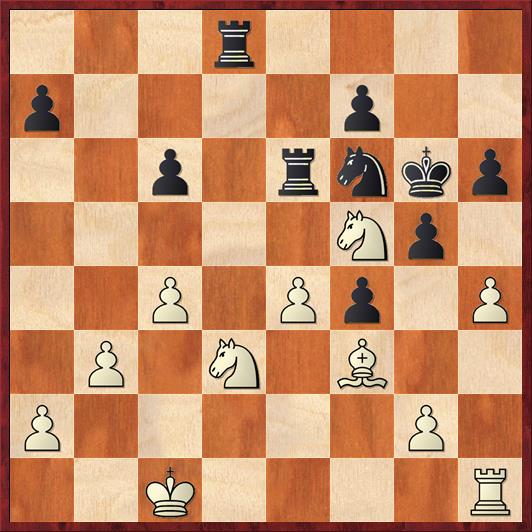Yesterday I celebrated another anniversary, and a pretty big one this time: the thirtieth anniversary of my wedding! Kay has been my rudder and my guiding light for all this time. She claims to be pretty satisfied with me too, although I’m not sure how much to believe her.
Because this is a chess blog, I have to somehow celebrate this occasion by showing you a chess game. One of the smartest things that Kay did during our courtship was to tell me that she would never play chess with me. The only time I’ve ever seen her play a game of chess was against one of my nephews, when he was five years old. She won, and she was pretty pleased with herself!
But we have no record of that game, so I’ve decided to show you my first chess game after getting married. It happened sooner than you might think. We delayed our honeymoon for a couple weeks, for various practical reasons like the end of the school year. That year (1989), I was playing a weekly game at lunchtime against Greg Samsa, a two-time (1981 and 1982) champion of North Carolina. It was a great training experience, one that I think was directly responsible for my winning my first tournament after moving to Ohio later that year.
Let me say a little bit about Greg. He was a two-time champion and I was a two-time champion (1985 and 1987), but that’s where the similarities end. To put it simply, he was a way better player than me. The ratings said so (he was around 2300, I was around 2200), but the difference was bigger than that. He was a very Capablanca-like player. The game just came easily to him. He once told me why he never got into time trouble: “There’s just not that much to think about in chess.”
Can you believe it?! Not that much to think about?!
My style was completely the opposite. My only hope against him was to play for obscure complications and hope that my concrete calculation might compensate for his better understanding of the game. It didn’t work very often. I never beat him in a rated tournament game. But in our training matches that year I did score a win every now and then, and it just so happened that the week after my wedding was one of them.
Greg could have won many more state championships, but during those years his job or his family commitments or both prevented him from traveling. The only tournaments he played in were one-day tournaments in the Triangle (Durham/Raleigh/Chapel Hill) area. For that reason I always felt that my two championships came with an asterisk, meaning best player in North Carolina not named Greg Samsa.
Dana Mackenzie – Greg Samsa
May 23, 1989
Game/45
1. d4 g6 2. e4 Bg7 3. c4 d6 4. Nc3 Nf6 5. Be2 O-O 6. Bg5 …
The Averbakh Variation was my favorite in those days.
6. … Nc6 7. d5 Ne5 8. Qd2 c6 9. f4?! …
I thought this looked like a better version of the Four Pawns Attack, with fewer weaknesses. But it’s just the sort of position that Greg loves. He does not mind giving his opponent more space, trusting that his more flexible pieces will turn the opponent’s aggressiveness against him.
9. … Ned7 10. dc? …
I was hoping to get some pressure on the d-file and weaken Black’s queenside pawns. But the move cannot be recommended (in spite of the result of this game) because it helps Black develop. Better would be 10. Nh3 Nc5 11. Nf2 etc.
10. … bc 11. Bf3 Ba6
Trying to provoke b3, which leaves me very weak on the dark squares. But the bishop ends up being rather poorly posted on a6.
12. b3 h6 13. Bh5 e5!?

FEN: r2q1rk1/p2n1pb1/b1pp1npp/4p3/2P1PP1B/1PN2B2/P2Q2PP/R3K1NR w KQ – 0 14
Now the bear awakens from hibernation! As I’ve said, Greg typically bides his time until the opponent has made enough mistakes, and then he strikes. This move is a sure sign that he thinks I have weakened my position too much with 12. b3, and now he is going to blow the position open.
But this was arguably just a bit premature. Black’s position now has weaknesses, too – d6, c6, a6, the pinned knight on f6, a potentially pinned knight on d7 – and so White is (as Greg himself might have said), “not without counterplay.” An alternative was 13. … Qa5 immediately.
14. Qxd6! …
I admire the way I played in those days. Nowadays I would have looked at White’s knight on c3 and rook at a1, just floating in space, and I would have been too afraid to make such a move. But really this move is good for me. Although White may still have a disadvantage (the computer says so), Black is going to have to prove it tactically. In a complicated, tactical position, I would have a fighting chance.
14. … ef 15. O-O-O! …
This is what makes it all possible. White gets out of the possible two-way pins on his knight, frees the e1 square for his bishop, and increases his control over the d-file.
15. … Qa5 16. Be1 …
Now Greg’s Capablanca-like style works against him. He plays a calm positional move when the time was right to channel Alekhine.

FEN: r4rk1/p2n1pb1/b1pQ1npp/q7/2P1Pp2/1PN2B2/P5PP/2KRB1NR b – – 0 16
16. … Rfd8?
An absolutely natural-looking move, because Black wants to contest the d-file and turn up the heat on White’s queen. But it’s just too slow. Chess is about the initiative, and the way to keep the initiative in Black’s hands was to play 16. … Nxe4!? Now 17. Nxe4? would lose to Qa3+ 18. Kc2 Qb2+ 19. Kd3 Ne5 is almost mate. (White has to give up his queen.) Instead, 17. Bxe4 Bxc3 leads to a wild mess, but one has to like Black’s chances a little bit better because White’s king is more exposed.
17. Na4! …
White seizes the initiative and never gives it back.
17. … Qe5 18. Bc3 Qxd6 19. Rxd6 Rac8 20. Ne2 Ne8
Allows White to win material, but it’s hard to think of a decent alternative.

FEN: 2rrn1k1/p2n1pb1/b1pR2pp/8/N1P1Pp2/1PB2B2/P3N1PP/2K4R w – – 0 21
21. Rxd7! Rxd7 22. Bxg7 Kxg7 23. Nc5 Re7 24. Nxa6 Nf6?!
Surprisingly passive. The obvious move is 24. … c5, threatening to trap White’s knight. Greg must have seen that I could play 25. e5!, denying his rooks the squares they need to attack the knight. After 25. … Rxe5 the computer recommends 26. Kc2! with the idea of Nc1-d3, both attacking the c-pawn and chasing the rook away from its defense. Even so, Black should have tried this, because White was forced to find some not-obvious moves.
25. Nc5 …
Now White’s pieces dominate the board. Black’s only hope is that White will mess up in time pressure, because I was now down to less than 5 minutes for the rest of the game. However, this time I managed to keep alert tactically in spite of the time trouble.
25. … g5 26. Nd4 Re5 27. Nf5+ Kg6 28. Nd3 Re6 29. h4 Rd8

FEN: 3r4/p4p2/2p1rnkp/5Np1/2P1Pp1P/1P1N1B2/P5P1/2K4R w – – 0 30
30. hg! …
White has many ways to win, of course, but I thought that this was a neat twist. 29. … Rxd3 runs into 30. gf, and 29. … hg runs into 30. Rh6 mate! The variation that Greg chooses leads to a massive liquidation, after which White has an easily winning R+P endgame. I really like how smoothly this game went from move 17 on. It’s as if I was still living a charmed life after my wedding, and nothing I did on the chess board could go wrong.
30. … Nxe4 31. Nxf4+ Kxf5 32. Nxe3 fe 33. Bxe4+ Kxe4 34. gh Rh8 35. h7 Kf4 36. Rh3 and Black resigned a few moves later.
Apparently, marriage will do wonderful things for your chess! For one week, at least.


